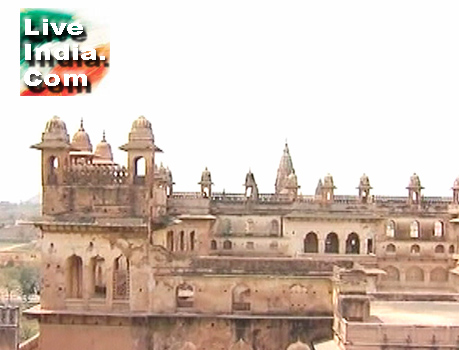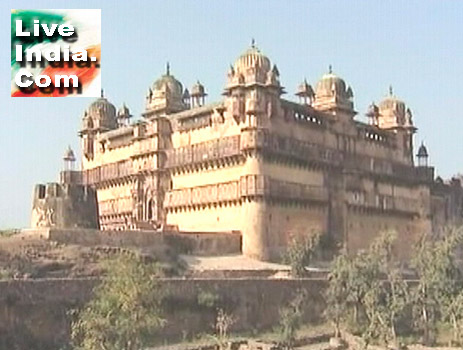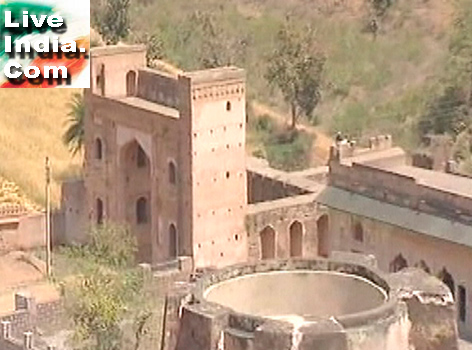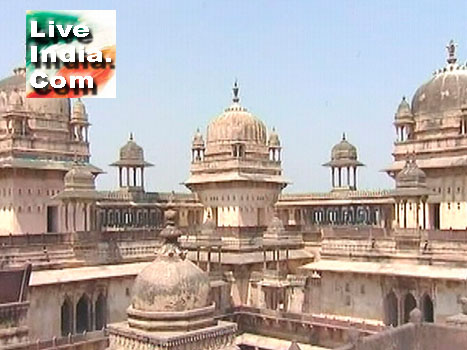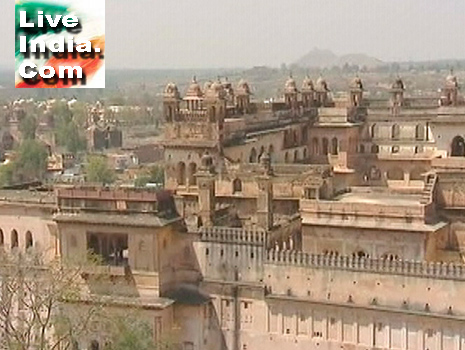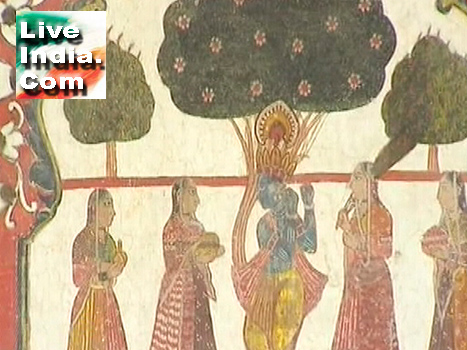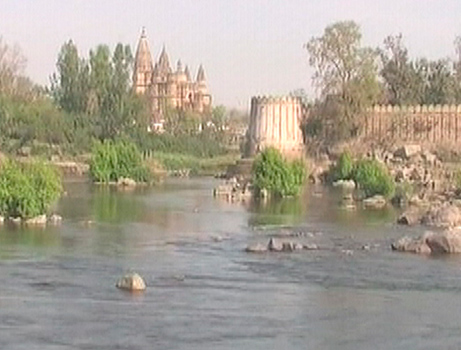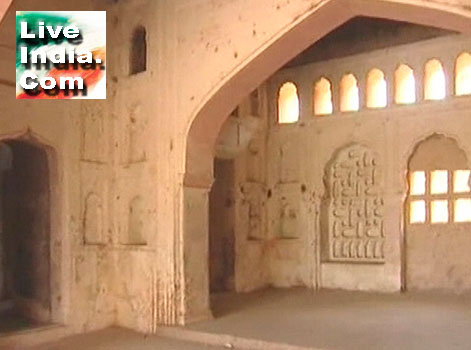| Orchha is endowed with
an extremely rich and diverse natural and hisrorical heritage. Broadly
its heritage can be divided into two parts.
The Natural Heritage ,
which covers the natural setting and land features otfhe region, It includes
the rivers Betwa and Jamni with the sfreamss joinin them, the tanks and
reservoirs in the area, the unique land features that give. Orchha a spedalposition,
and the forsts around orchha (Chandpura, Ronda, Katelakhandi, Sujanpur
and Larpura forest Reserves and the plantation in the Heritage Zone especially
the Citadel Area.
Orehha's grandeur has
been captured in stone, frozen in time; a rich legacy to the ages.
For on this medieval city, the hand of time has rested lightly and the
places and temples built by its Bundela rulers in the. 16th and 17th. centuries
retain much of their pristine perfection. Orchha was founded in the 16th
century by the Bundela Rajput chieftain Rudra Pratap who chose.this streatch
of land along the Betwa river as an ideal site for his capital. Of
'the succeeging rulers, the most notable was Raja Bir Singh Ju Deo who
built the exquisite Jehangir Mahal, a tiered palace crowned by graceful
chhatries. From here the view of soaring temple spires and cenotaphs is
spectacular.
Complementing the noble
proportions of their exteriors and interiors which represent the finest
flowering of the Bundela school painting. In the Laxmi Narayan Temple,
Vibrant Murals encompassing a variety of religious and secular themes,
bring the walls and ceiling to rich life. Strewn around the area are little
shrines and memorials, each with its own poignant history, each contributing
to the nostalgic beauty is Orchha. Jehangir Mahal : Built by Raja Bir Singh
Ju Deo in the 17th century to commemorate the visit of Emperor Jehangir
to Orchha. Its strong lines are counterbalanced by delicate chhatries and
treillies work, the whole conveying an effect of extraordinary richness.
Raj Mahal : Situated to
the right of the quardrangle, this palace was built by Madhukar Shah, the
deeply religious predecessor of Bir Singh Ju Deo. The plain exteriors,
crowned by Chharties, give way to interiors with exquisite murals, boldly
colourful, on a variety of religious themes.
Rai Praveen Mahal : Poetess
and musician, Rai Praveen was the beautiful paramour of Raja Indramani
(1672-76), and was sent to Delhi on the orders of Emperor Akbar, who was
captivated by her. She so impressed the Great Mughal with the purity of
her love for Indramani that he sent here back to Orchha.
The palace built for
her is a low, two storeyed brick structure, designed to match the height
of the trees in the surrounding, beautifully landscaped gardens of Anand
Mahal, with its octagonal flower beds and elaborate water supply system.
Skilfully carved niches allow light into the Mahal which has a main hall
and smaller chambers.
Ram Raja Temple : This
palace - turned - temple has a charming legend attached to it. Following
the dream visitatio of Lord Rama, Madhukar Shah's wife, Ganesh Kunawari
brought a statue of the God from Ayodha to Orcha. While the king was a
worshipper of Lord Krishna, the queen was a devotee of Lord Rama.
The image was placed in
a palace prior to its installation in a temple. When the idol proved impossible
to move, the queen recalled, too late the deity's edict that the image
would remain in the place where it was first installed. Today, with its
soaring spires and palatial architecture, the temple is surely one of the
most unusual in India. It is also the only in the country where Rama is
worshipped as a king (Raja).
Laxminarayana temple:
A flagstone path links this temple with the Ram Raja Temple. The style
is an interesting synthesis of fort and temple moulds. The interiors
Covering the walls and
ceiling of three halls, these murals are vibrant compositions andcover
a variety of spiritual and secular subjects. They are in an excellent state
of preservation, with the colours retaining their vivid quality. |


